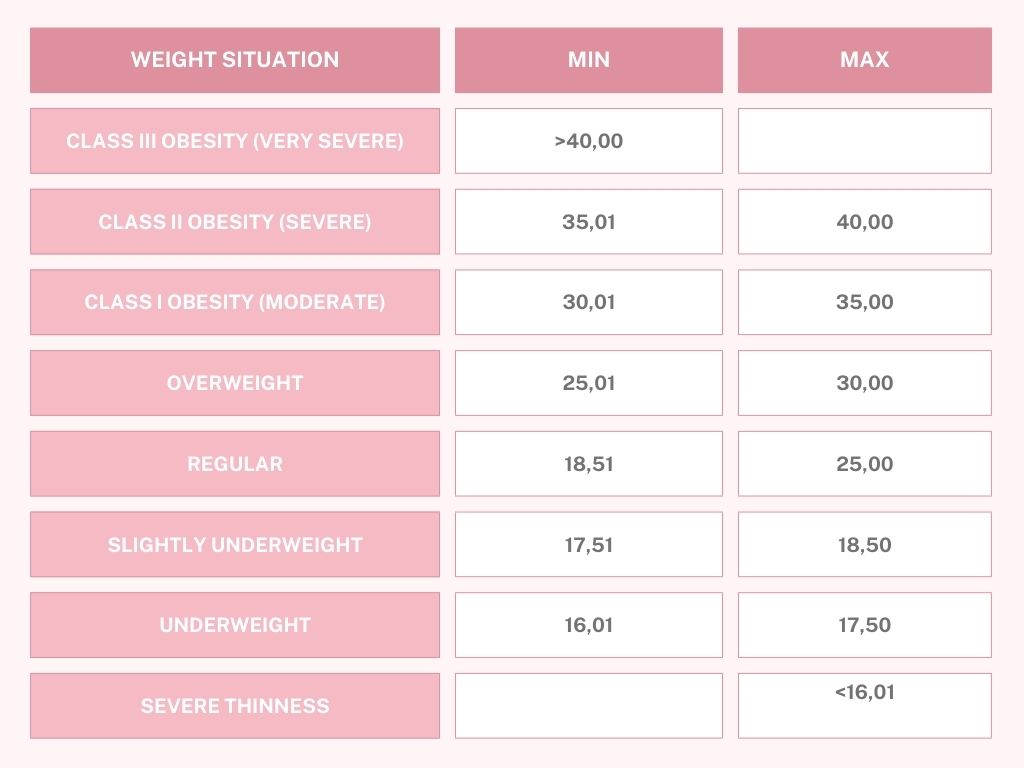Body mass index: what it is and how to calculate it
BMI, short for Body Mass Index, is a key parameter for understanding an individual’s body mass in relation to height. This tool, also known as BMI (Body Mass Index), is used globally as an indicator of nutritional status.
Throughout this article, we will explore in detail the meaning and evaluation of the Body Mass Index, understand how to calculate it, and analyze the limitations of this tool. In addition, we will examine how BMI affects health and why it is essential to also consider other factors when assessing a person’s overall well-being.
Introduction to Body Mass Index (BMI or BMI)
The Body Mass Index, is a widely used parameter for assessing a person’s body mass in relation to his or her height. This tool provides a rough measure of body composition and is used as an indicator of nutritional status.
The key concept behind BMI is quite simple: it is a ratio of a person’s mass, expressed in kilograms, to the square of their height, expressed in meters. This formula yields a numerical value that is subsequently used to classify individuals into different weight categories, from underweight to normal weight, overweight and obesity.
| BMI = Mass (Kg) / Height2 (m) |
Recognizing the importance of BMI is crucial because this index not only provides an overview of an individual’s body mass, but also correlates with the risk of developing a number of diseases, including cardiovascular disease, diabetes, and other obesity-related conditions.

Limitations of body mass index
One of the main limitations of BMI is that it does not take into account specific body composition. It does not distinguish between fat mass and lean mass, which means that a person with significant muscle mass, such as an athlete, could be classified as overweight or even obese based on BMI. This does not accurately reflect his or her actual health status.
In addition, BMI may not be accurate for individuals with particular physical characteristics, such as those who are very tall or very short. For individuals of extreme height, BMI may overestimate or underestimate their body weight status.
In fact, this index provides a rough and quantitative assessment of body weight, but it is not exhaustive. When assessing a person’s well-being, it is essential to supplement BMI with other tools and factors, such as waist circumference, body composition, and general health status.
Overall, while BMI can be a useful indicator for many people, it is critical to understand that it has its limitations and should be considered in the context of a more comprehensive assessment of an individual’s health and well-being.
Body Mass Index and Health
Although your ideal mass is influenced by genetics, diet and exercise, Body Mass Index (BMI) is a widely used tool to assess mass in relation to height.It may actually be more useful to consider body fat percentage, more than BMI as a primary indicator of health since this is more closely related to serious health conditions such as:
- Heart disease
- Hypertension
- Liver disease
- Osteoarthritis
- Diabetes
- Heart attack
- Gallstones
Therefore, reducing body fat through regular physical activity becomes critical to improving overall health. An exercise plan that includes at least three exercise sessions per week can help reduce the risk of these conditions. At the same time, adopting healthy eating habits, such as eating only when hungry and choosing unprocessed whole foods, can play a significant role in weight management.
On the other hand, a very low BMI can lead to health problems, including:
- Loss of bone mass
- Decreased immune function
- Heart problems
- Iron deficiency anemia
If you are concerned that your BMI is too low, you should consult with a physician or dietitian to explore options for healthy and sustainable weight gain.
Learn more by checking out the latest scientific research on PubMed



